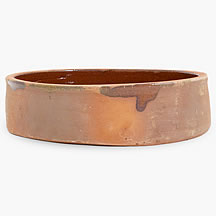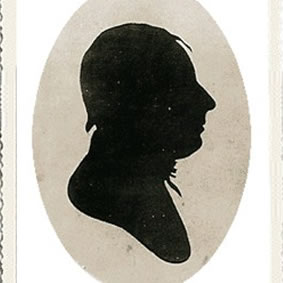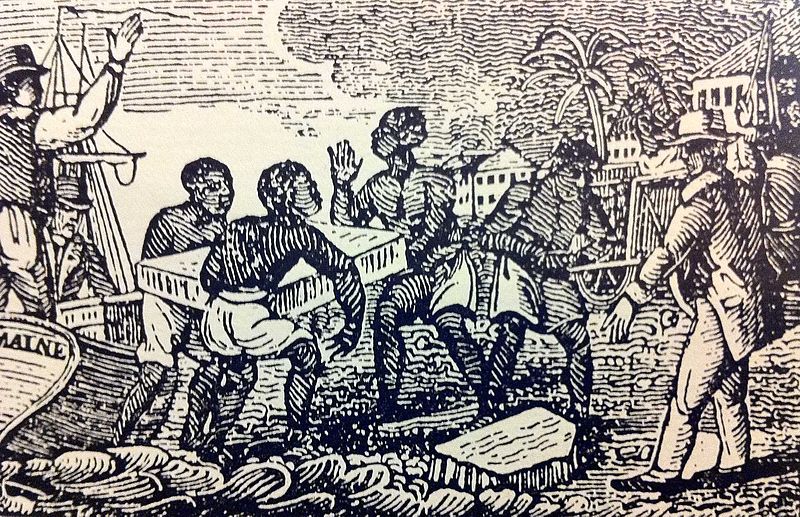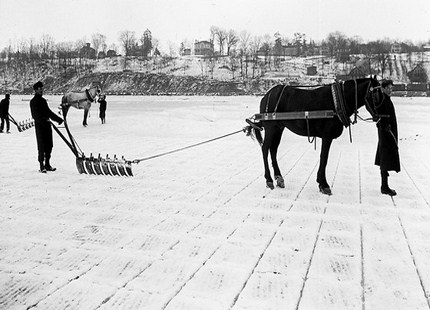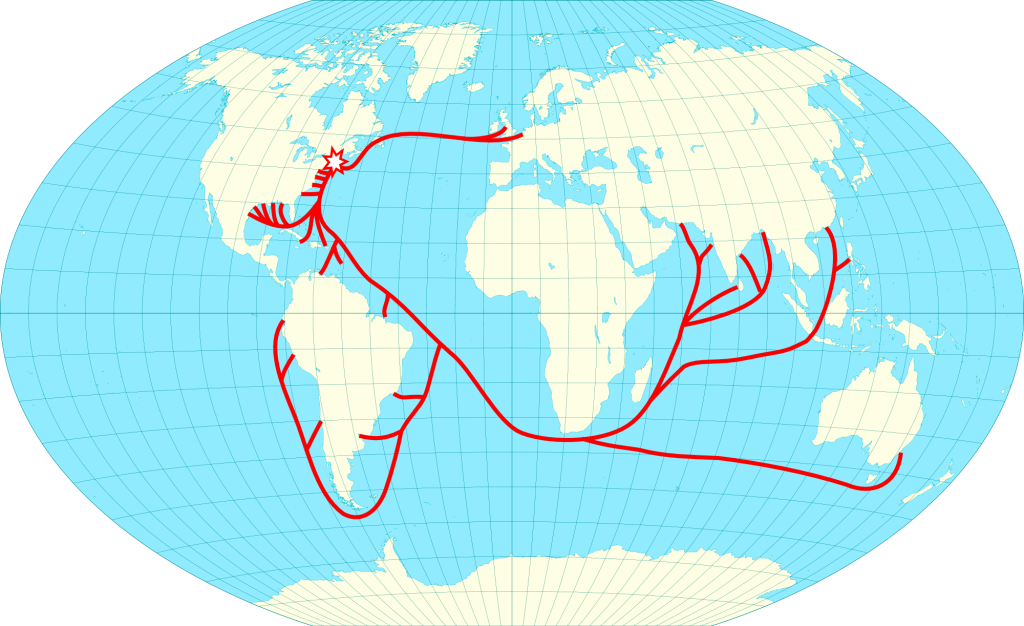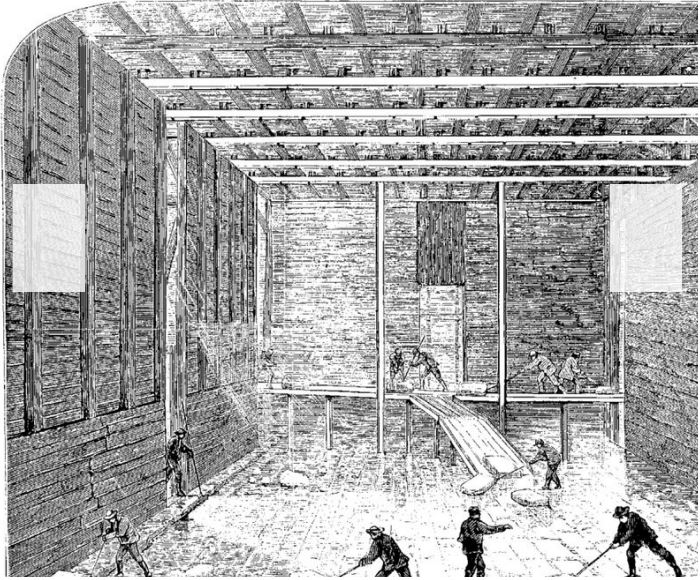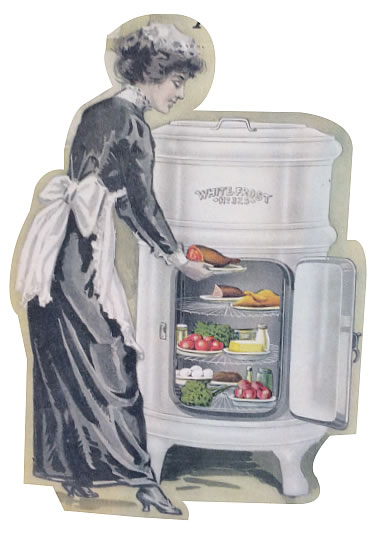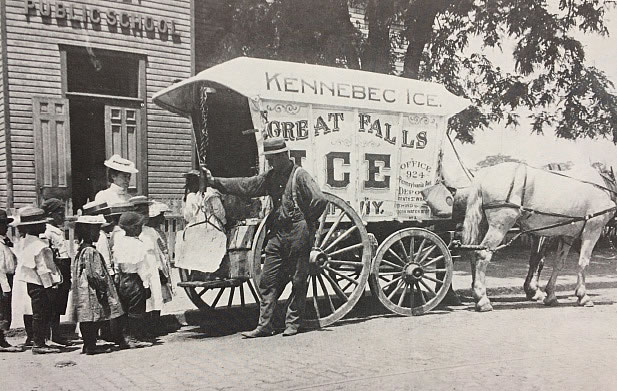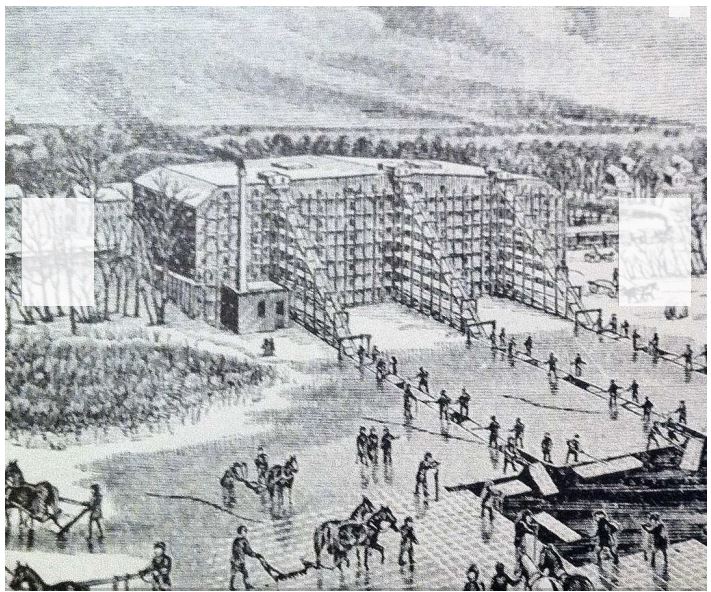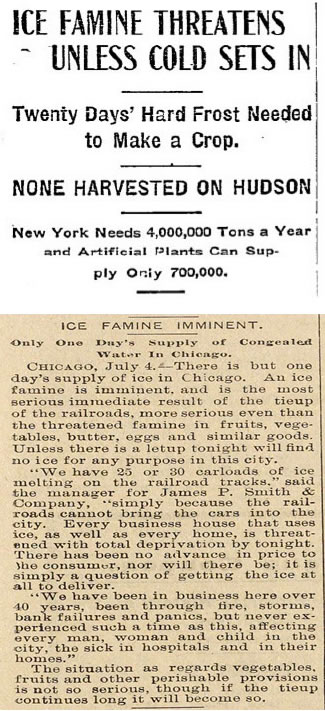Industry History
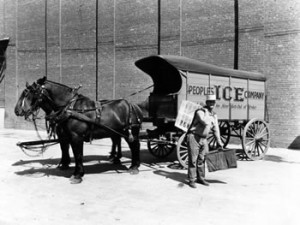
1000 B.C.: A means of preserving food
The Chinese cut and stored ice in 1,000 B.C as a means of preserving food.
1805: Frederick Tudor
Frederick Tudor (1783–1864) founder of the Natural Ice Trade was known as the “Ice King.” Tudor came from a wealthy Boston family; instead of following in his brother’s footsteps and going to Harvard, he quit school at age 13. An ambitious young man he worked on the family farm and in the Boston harbor. During this time, Tudor had the idea of shipping frozen water to the colonists in the West Indies. Learn more.
1820: Dangers of Ice Harvesting
1830: Growth of International Trade Routes
The Ice Trade began to expand, with new routes being established throughout the world. Wooden hulled ships loaded with Ice were sent to Rio de Janeiro, Sydney Australia and as far as Calcutta India. Empty ships would be loaded with sugar, spices and other commodities returning to America. Ice became the 2nd largest United States export during the 19th Century.
1840: Ice Industry Growth in The United States
The ice industry shifted from exports to expansion within the United States. Wooden hulled ships carried ice alongside fish, butter, eggs and beer. Ice allowed other perishable industries to expand and grow. Ships were important in the early years of trade since the railroad networks were non-existent. Learn more.
1850: Ice House Storage
During the 1850’s the ice industry continued to expand within the United States. In 1855 New York City alone sold 75,000 tons of ice, 25 years later, New York’s ice consumption grew to 2.5 million tons. The Hudson River had over 130 major ice houses employing over 20,000 men. Learn more.
1860: Changing The Way We Live
Ice became essential to the improving lifestyle of Americans. The convenience and health benefits of ice are now a necessity. Home ice boxes allowed for storage of fresh meats and produce alleviating daily trips to the market. The ice industry enabled the consumption of a wide range of new products. The diet of the United States changed dramatically. Learn more.
1865: Ice Refrigerated Rail Car
A special rail car and loading system using ice were designed and built to transport perishable products. With the improved network of railroads and a chain of “icing stations” every 400 miles across the US, produce from California, beef from Chicago and beer from Milwaukee, as well as other perishable products, are now able to be distributed across the country. Learn more.
1870: The Ice Man
New York, Boston and Philadelphia saw their populations explode with immigrants driving up the demand for ice. During this time, nearly every family, grocer and barkeep in America had an ice box. In 1879 one company, Consolidated Ice had 3,000 horse-drawn ice wagons delivering to consumers in New York City. Learn more.
1880: Peak of The Natural Ice Trade
With a rising standard of living, population growth and a desire for luxury products, the demand for ice continued to increase. At its peak, it was estimated that NYC had 90,000 people and 25,000 horses involved in the natural ice trade. Produce growers, meat packers and dairy farmers now capable of shipping refrigerated products worldwide became huge multinational corporations. Learn more.
1900: Decline of the Natural Ice Trade
Warm winters often prevented a successful ice harvest, thus creating ice famines. Americans now dependent on a regular supply were scrambling for ice. Due to the unpredictability of natural ice, a decreasing clean water supply and the growing impatience of industrialists, the production of artificial ice began to grow. Learn more.
1910-1945: World War I & II Helped to Boost The Natural Ice Trade
World War I and II helped to boost the natural ice trade for a time during the wars. The government worked to promote the use of natural ice to relieve the burden of the shortage of ammonia and coal used in the production of artificial ice. After the wars, the natural ice industry collapsed into insignificance, and the industry turned to artificial ice and mechanical cooling systems.
 As the American society grew more accustomed to fresh meats, milk, fruit and produce, the ice industry expanded into one of the most powerful industries in the nation.
As the American society grew more accustomed to fresh meats, milk, fruit and produce, the ice industry expanded into one of the most powerful industries in the nation.
At the turn of the 20th century, nearly every family, grocer and barkeeper in America had an ice box. Ironically, America’s dependence on ice created the very technology that would lead to the decline of the ice empire.
 Ice revolutionized the way Americans ate and drank. A dependable ice supply made it possible to deliver fresh meats, seafood, dairy and produce to distant markets and keep it safe from spoilage in home ice boxes. Fruit growers and packers capable of shipping refrigerated products worldwide became huge multinational corporations.
Ice revolutionized the way Americans ate and drank. A dependable ice supply made it possible to deliver fresh meats, seafood, dairy and produce to distant markets and keep it safe from spoilage in home ice boxes. Fruit growers and packers capable of shipping refrigerated products worldwide became huge multinational corporations.
 Ice harvesting eventually became the victim of its own success. Industrialists grew impatient with the unpredictability of natural ice. Water pollution made it difficult to find suitable supplies.
Ice harvesting eventually became the victim of its own success. Industrialists grew impatient with the unpredictability of natural ice. Water pollution made it difficult to find suitable supplies.
Home delivery continued for a long time, in the 1920’s apartment buildings were still being constructed with ice doors opening into the kitchen. In the mid-1940’s electric refrigerators replaced the ice box.
The natural ice business has melted away with scarcely a trace.

